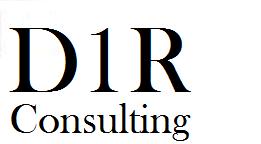Profit optimization
- Details
- Published: Saturday, 21 January 2012 18:25
- Written by David DeCiero
In profit optimization, there is a need for balance on the revenue and costs. Traditionally, there has been a focus on either one or the other depending on the situation. In economic recessions, revenue is assumed to be static or decreasing, so the drive is to lower costs. In economic expansions, revenue opportunity is present, so retailers tend to chase this with the assumptions that costs will invariably increase. These assumptions need to be challenged in order to optimize profits, in good times and bad.
First, let us focus on the economic recession scenario. Here, it is assumed that revenue will remain static or decrease. Therefore, the only way to increase profits is to drive down costs. Is the assumption that revenue will remain static really true? The answer for a small to medium sized liquor retailer is “No.” Through competitor analysis, you will find that most of the other retail locations think this way. This creates a tactical opportunity to exploit the retrenchment of your competition. Simply by challenging the assumption, you will be able to investigate ways to take advantage of the competition and increase market share. On the cost side, the competition also will most likely seek to cut costs with little regard for the true impact. By not understanding their business and the truly value creating work that is done, they may be impacting their business far beyond the bottom line. A thorough review of their business processes would reveal what can be cut and what should not. Cutting costs without understanding its ripple effect is a recipe for future problems. So, economic recession provides opportunities on both the revenue and the cost side to optimize profits.
Next, there is the economic expansion scenario. Here, it is assumed that revenue is out there, so it needs to be captured. This is usually done with costs seen as an “investment.” The costs are not seen as lost, but rather as in pursuit of the revenue. So, let us challenge the assumption that costs will always increase. The answer is “No.” Now, perhaps our marketing costs will rise to capture the revenue, but that doesn’t mean our operating costs have to rise as well. The situation allows us to investigate efficiency measures in other areas so that costs can be kept in line. What happens if we accept conventional thinking and increase costs? The revenue does tend to increase, but it is usually transient and fleeting. This set of events can eventually lead to a bloated cost structure that can be devastating when an economic recession hits. Obviously, this situation will want to be avoided.
So, what is a retail liquor business owner to do? The answer is to be constant on both the revenue and the cost fronts. The focus on continuous improvement on both sides of the ledger will result in a more disciplined approach and a maximization of profits. A focus on one side or the other is usually insufficient, the two must usually be done in tandem. D1R Consulting can help you in this goal by providing competitor analysis, customer analysis and business process management. These different types of analysis focus on both revenue and cost to optimize profits for your business.

